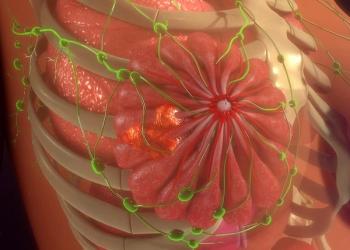
KRAS is an ‘Exciting Area’ in NSCLC And Other Disease Types
Cell therapy and vaccine approaches are among the several potential options for targeting KRAS in patients with KRAS G12C–mutated non–small cell lung cancer, says Sandip P. Patel, MD.
Sandip P. Patel, MD, spoke with CancerNetwork® about ongoing clinical research focused on developing new ways to target KRAS mutation in patients with KRAS G12C–mutated non–small cell lung cancer (NSCLC).
According to Patel, a professor in the Department of Medicine at the University of California, San Diego, managing KRAS mutations in this patient population encompasses combination therapies including agents such as sotorasib (Lumakras) and adagrasib (Krazati), which he says are producing “interesting” therapeutic activity. Additionally, there are several options that fall under the pan-KRAS inhibitor umbrella, which include small molecule inhibitors, protein degraders, antisense molecules, cell therapy strategies, and vaccination.
Given the wide range of potential treatment strategies in this population, Patel suggests that understanding biomarker development is key to ensuring that patients are receiving the most suitable therapies. He also said that researching KRAS may be an area of interest outside of NSCLC, including colorectal and pancreatic cancer.
Transcript:
Broadly, KRAS is probably the most exciting area in clinical trials right now, not only in thoracic oncology but also pancreatic and colorectal cancer, where we’ve seen a lot of combination therapies. My view is the small molecule inhibitors are the base, not the ceiling. The idea is that we would get monotherapy efficacy; frankly, with these agents, any efficacy at all is quite surprising because of how tough KRAS is to target. The idea that we were going to use combination approaches, eventually, made it make a lot of sense. We’re starting to see in some of these biomarker design combinations some interesting therapeutic activity. On the one hand, [we have] combinations featuring agents such as sotorasib and adagrasib, and then on the other hand there is a whole class of pan-KRAS inhibitors, and these come in multiple [options], like small molecule [inhibitors], protein degraders, or antisense molecules. There are cell therapy approaches and vaccine approaches, really a myriad of approaches. It’s unlikely to be “winner takes all.” It’s much more likely that we are going to find scenarios in which certain agents may make more sense. Understanding the biomarker development and understanding which patient populations may benefit is key so that we can ensure that we deliver the right drug to the right patient at the right time.
Newsletter
Stay up to date on recent advances in the multidisciplinary approach to cancer.

















































































